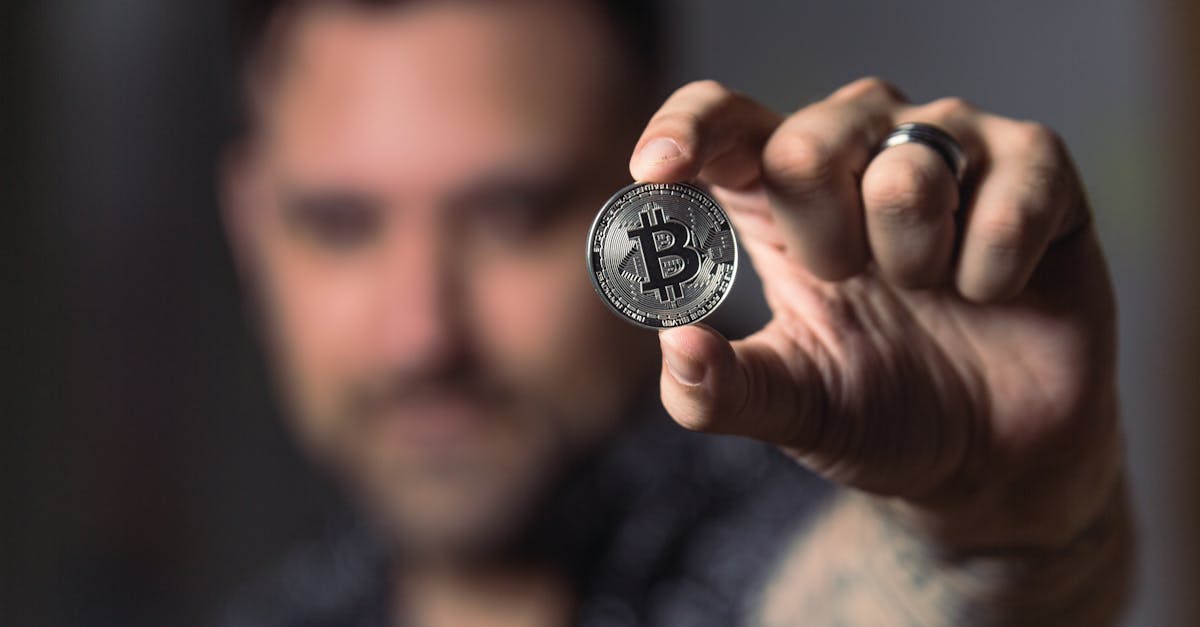You’ve probably heard countless stories about people losing millions in cryptocurrency through hacks, scams or simple mistakes. While these headlines might seem terrifying, they don’t have to become your reality. Understanding crypto security fundamentals can protect your digital assets and give you confidence in the blockchain space.
Cryptocurrency security isn’t as complicated as it might appear. You don’t need to be a tech expert to keep your coins safe – you just need to follow proven security practices that successful crypto investors use daily.
Whether you’re buying your first Bitcoin or exploring altcoins, mastering these security basics will become your foundation for safe crypto investing. From choosing secure wallets to recognising common scams, you’ll discover practical steps that protect your investments without overwhelming complexity.
Understanding Cryptocurrency Security Fundamentals
Cryptocurrency security operates on three core principles that protect your digital assets from unauthorised access. These principles form the foundation of every secure crypto transaction and storage method you’ll encounter.
Private keys serve as your digital signature and ownership proof for cryptocurrency holdings. Each private key generates a unique cryptographic code that only you possess, making it impossible for others to access your funds without this information. You must never share your private key with anyone, as possession of this key equals complete control over your associated cryptocurrency.
Public keys work alongside private keys to create a secure communication channel for transactions. Your public key derives from your private key through mathematical algorithms, creating a wallet address that others can use to send you cryptocurrency. This address remains safe to share publicly whilst keeping your private key completely confidential.
Digital wallets store your private keys and facilitate cryptocurrency transactions through secure interfaces. These wallets exist in two primary forms: hot wallets (connected to the internet) and cold wallets (offline storage devices). Hot wallets offer convenience for frequent trading but carry higher security risks, whilst cold wallets provide maximum security for long-term storage.
The blockchain network validates every transaction through a decentralised verification process before recording it permanently. This system eliminates the need for traditional banking intermediaries whilst maintaining security through cryptographic hashing and consensus mechanisms.
Seed phrases consist of 12-24 randomly generated words that backup your entire wallet and all associated private keys. These phrases follow the BIP39 standard, ensuring compatibility across different wallet providers. Write down your seed phrase on paper and store it in multiple secure locations, as losing this phrase means permanent loss of access to your cryptocurrency.
Two-factor authentication (2FA) adds an essential security layer to your crypto accounts by requiring secondary verification beyond passwords. Popular 2FA methods include SMS codes, authenticator apps like Google Authenticator, and hardware tokens. Enable 2FA on all crypto-related accounts including exchanges, wallets, and email addresses linked to your investments.
Setting Up Secure Crypto Wallets
Creating your first crypto wallet marks the beginning of your journey into secure digital asset management. Understanding the different wallet types and their security features helps you make informed decisions about protecting your cryptocurrency investments.
Hot Wallets vs Cold Wallets
Hot wallets connect directly to the internet, making them convenient for frequent trading and quick transactions. These software-based wallets allow instant access to your funds but expose your private keys to potential online threats and hacking attempts.
Cold wallets operate completely offline, storing your private keys on physical devices without internet connectivity. This offline storage significantly reduces your exposure to cyber-attacks and remote hacking threats, though accessing your funds requires manual connection to complete transactions.
| Wallet Type | Connectivity | Security Level | Convenience | Use Case |
|---|---|---|---|---|
| Hot Wallet | Online | Moderate (higher risk) | High (easy access) | Regular transactions |
| Cold Wallet | Offline | High (low risk) | Lower (manual connection) | Long-term storage |
| Hardware Wallet | Offline device | High | Moderate | Secure key storage |
Hardware Wallet Recommendations
Ledger hardware wallets support multiple cryptocurrencies whilst keeping your private keys stored on encrypted chips. These devices require physical confirmation for every transaction, preventing unauthorised access even if your computer becomes compromised.
Trezor devices offer open-source security with intuitive interfaces for managing various digital assets. Both manufacturers provide regular firmware updates and comprehensive customer support to maintain the highest security standards for your crypto storage needs.
Software Wallet Best Practices
Configure strong, unique passwords for all your software wallets, avoiding common phrases or easily guessable combinations. Enable two-factor authentication (2FA) on every wallet account to add an extra security layer against unauthorised access attempts.
Store your seed phrases offline using physical materials like paper or metal plates, never saving them digitally or in cloud storage services. Update your wallet software regularly to benefit from the latest security patches and bug fixes.
Verify wallet provider authenticity before downloading any software, as fraudulent applications often mimic legitimate services. Split your cryptocurrency holdings between hot and cold wallets to balance convenience with security, keeping larger amounts in offline storage.
Essential Security Practices for Crypto Storage
Your wallet’s security depends on implementing three fundamental practices that protect your digital assets from theft and loss. These practices form the backbone of cryptocurrency security and require consistent attention to maintain optimal protection.
Private Key Management
Your crypto wallet generates two linked codes that control access to your digital assets. The public key functions like an account address for receiving funds and can be shared openly with others. The private key acts as your secret password and serves as definitive proof of ownership for your cryptocurrency.
Keep your private key completely confidential and never share it with anyone under any circumstances. Anyone who obtains access to your private key gains complete control over your associated crypto assets. Store your private key offline in a secure location away from potential hackers or malicious software.
Losing your private key results in permanent and irrevocable loss of access to your funds. No recovery mechanism exists for lost private keys, making their protection absolutely critical for maintaining control of your digital assets.
Seed Phrase Protection
A seed phrase consists of 12 or 24 randomly generated words that serve as a human-readable backup for your wallet. This phrase can restore complete access to your wallet if your device becomes lost, stolen, or damaged. The phrase provides an alternative method for accessing your funds when your primary wallet becomes unavailable.
Store your seed phrase offline using a physical medium resistant to damage such as a metal card or fireproof safe. Write down the words in the exact order provided and keep multiple copies in separate secure locations. Never store your seed phrase digitally on computers, phones, or cloud storage services where hackers might discover it.
Physical security remains paramount because the massive combination space makes brute force attacks nearly impossible. If an attacker obtains your seed phrase, they can clone your wallet and steal all associated assets immediately.
Two-Factor Authentication Setup
Two-factor authentication (2FA) adds an essential security layer that requires an additional verification step beyond your password. This system demands a one-time code sent to your mobile device or email alongside your standard login credentials. Even if hackers compromise your password, they cannot access your wallet without completing the second authentication factor.
Enable 2FA on all crypto-related accounts including exchanges, wallet applications, and trading platforms. Use authenticator apps like Google Authenticator or Authy rather than SMS messages for receiving verification codes. Authenticator apps provide better security because they don’t rely on potentially vulnerable phone networks.
Configure backup authentication methods to prevent permanent lockout if you lose access to your primary 2FA device. Store backup codes in secure offline locations and test your authentication setup regularly to ensure proper functionality.
Recognising and Avoiding Common Crypto Scams
Crypto scammers use sophisticated methods to steal digital assets from unsuspecting investors. Understanding these tactics helps you protect your funds and avoid becoming another victim in the cryptocurrency space.
Phishing Attacks and Fake Websites
Phishing attacks target your private keys and crypto assets through fraudulent websites and emails that mimic legitimate platforms. Scammers create fake exchanges, wallet services and DeFi platforms to trick you into entering your login credentials or seed phrases.
Common phishing indicators include:
- URLs with slight spelling variations like “binannce.com” instead of “binance.com”
- Unsolicited emails requesting immediate action on your account
- Pop-up messages claiming urgent security updates
- Social media advertisements offering exclusive crypto deals
Protect yourself by typing exchange URLs directly into your browser rather than clicking links. Verify website certificates by looking for the padlock icon in your address bar. Download apps and browser extensions exclusively from official app stores and verified sources.
Social Engineering Tactics
Social engineers manipulate you psychologically to reveal private information or transfer funds to their wallets. These scammers often impersonate customer support representatives, crypto influencers or trusted colleagues to build credibility.
Typical social engineering scenarios:
- Fake support agents claiming suspicious activity on your account
- Romance scams where criminals build relationships before requesting crypto investments
- Impersonators posing as celebrity crypto endorsers on social media
- “Emergency” calls from friends requesting urgent crypto transfers
Legitimate crypto platforms never request private keys, seed phrases or passwords through phone calls, emails or direct messages. Verify any unusual requests by contacting the person or company through official channels. Enable privacy settings on social media accounts to limit scammer access to your personal information.
Investment Fraud Schemes
Investment scams promise unrealistic returns to lure victims into Ponzi schemes, pyramid structures and fake trading platforms. These fraudulent operations use new investor funds to pay earlier participants until the scheme inevitably collapses.
| Scheme Type | Promise | Reality |
|---|---|---|
| Crypto Ponzi | 10-50% monthly returns | Uses new deposits to pay existing investors |
| Fake Mining | Guaranteed mining profits | No actual mining equipment exists |
| Pump and Dump | Insider trading tips | Coordinated price manipulation |
| Cloud Mining | Passive income streams | Fictional mining operations |
Research any investment opportunity thoroughly before committing funds. Check if crypto projects have verified teams, audited smart contracts and realistic roadmaps. Avoid investments that guarantee returns, pressure you to recruit others or require upfront payments for “exclusive” opportunities. Remember that legitimate investments carry risk and never promise guaranteed profits.
Safe Trading and Exchange Practices
Safe trading practices protect your cryptocurrency assets through secure exchange selection and proper transaction management. These practices form the foundation for maintaining asset security whilst actively participating in crypto markets.
Choosing Reputable Exchanges
Selecting trustworthy exchanges ensures your trading activities remain secure and compliant with regulatory standards. Reputable platforms implement comprehensive compliance measures including Anti-Money Laundering (AML) and Know Your Customer (KYC) policies that protect both users and the platform itself.
Research exchanges that provide transparency through third-party audits and regulatory compliance within their operating jurisdictions. These platforms demonstrate their commitment to security through clear documentation of their safety protocols and financial backing.
Consider exchanges that offer insurance coverage for digital assets stored on their platforms. This additional protection layer safeguards your funds against potential security breaches or platform failures.
Key Features of Reputable Exchanges:
| Security Feature | Description | Benefit |
|---|---|---|
| Regulatory Compliance | AML/KYC policies and legal authorisation | Enhanced user protection and legitimacy |
| Third-Party Audits | Independent security assessments | Verified security standards |
| Insurance Coverage | Asset protection against breaches | Financial compensation for losses |
| Transparent Fee Structure | Clear trading and withdrawal costs | No hidden charges |
Notable platforms including Coinbase, Kraken, Gemini, and eToro have established strong reputations through consistent compliance and robust security implementations. These exchanges maintain user-friendly interfaces that simplify the trading process for beginners whilst providing advanced features for experienced traders.
Withdrawal and Deposit Security
Secure deposit and withdrawal processes protect your funds during transfers between your bank accounts, wallets, and exchange platforms. Identity verification creates a direct link between your assets and account, significantly reducing fraud risks during transactions.
Connect your bank accounts through secure channels provided by the exchange platform. Verify that the platform employs strong encryption protocols and supports two-factor authentication (2FA) for all login attempts and transaction approvals.
Minimise long-term storage of large amounts on exchange platforms by transferring assets to personal wallets after completing trades. Cold wallets (offline storage) provide superior security compared to keeping funds on exchange platforms indefinitely.
Essential Security Measures:
- Identity Verification: Complete KYC processes to secure your account and enable higher transaction limits
- Secure Banking Connections: Use official platform channels to link your bank accounts and payment methods
- Two-Factor Authentication: Enable 2FA for login credentials and transaction confirmations
- Regular Withdrawals: Transfer funds to personal wallets rather than storing them on exchanges
- Transaction Monitoring: Review all deposit and withdrawal confirmations for accuracy and unauthorised activity
Monitor your account activity regularly and report any suspicious transactions immediately. Most reputable exchanges provide detailed transaction histories and real-time notifications that help you track your asset movements and identify potential security concerns quickly.
Creating Strong Passwords and Backup Strategies
Strong passwords form the first line of defence against unauthorised access to your cryptocurrency accounts. Your password must contain at least 14 characters and include a combination of uppercase letters, lowercase letters, numbers, and symbols to create maximum security. Avoiding predictable information such as birthdays, names, or common dictionary words significantly increases the time hackers require to crack your credentials through brute-force attacks.
Password Complexity Requirements
Password complexity directly correlates with account security levels in cryptocurrency platforms. Create unique passwords for each crypto-related account you maintain, including exchanges, wallets, and portfolio tracking applications. Strong passwords containing mixed character types can take hackers thousands of years to crack using current dictionary attack methods, whilst simple passwords may be compromised within minutes.
Consider these essential password elements:
- Length: Minimum 14 characters for adequate protection
- Character variety: Mix of uppercase, lowercase, numbers, and special symbols
- Uniqueness: Different passwords for each crypto service
- Unpredictability: Avoid personal information or common phrases
Understanding Seed Phrase Security
Seed phrases serve as the ultimate backup mechanism for your cryptocurrency wallets, consisting of a series of words that can restore complete wallet access if your device becomes lost or damaged. These phrases typically contain 12 to 24 randomly generated words that mathematically represent your private keys. Anyone who gains access to your seed phrase can recreate your entire wallet and transfer all associated funds.
Store your seed phrase offline using physical methods rather than digital storage to prevent potential hacking attempts. Write the words on paper or engrave them on metal plates, then store these backups in multiple secure locations such as safety deposit boxes or fireproof safes. Never photograph your seed phrase, save it in cloud storage, or share it through messaging applications.
Backup Strategy Implementation
Multiple backup strategies protect your cryptocurrency assets from various failure scenarios including device theft, natural disasters, or hardware malfunctions. Create redundant copies of your seed phrase and store them in geographically separated locations to ensure access even if one backup becomes compromised or destroyed.
| Backup Method | Security Level | Accessibility | Cost |
|---|---|---|---|
| Paper storage | High | Medium | Low |
| Metal engraving | Very High | Low | Medium |
| Safety deposit box | Very High | Low | High |
| Fireproof safe | High | High | Medium |
Test your backup recovery process periodically using small amounts to verify that your seed phrase restoration works correctly. This practice ensures you can recover your funds when needed whilst identifying potential issues before they become critical problems.
Never store your seed phrase and passwords in the same location, as this creates a single point of failure that could compromise all your cryptocurrency assets simultaneously. Distribute these critical security elements across different secure locations to maintain optimal protection levels for your digital investments.
Conclusion
Your crypto security journey starts with implementing these fundamental practices today. You’ve learnt that protecting your digital assets doesn’t require advanced technical knowledge – just consistent application of proven security measures.
Remember that cryptocurrency security is an ongoing responsibility rather than a one-time setup. Threats evolve constantly and your vigilance must match this pace. Regular security audits of your practices will keep your investments protected.
The blockchain space offers incredible opportunities but only when you maintain proper security hygiene. By following these basic principles you’ll build the confidence needed to navigate the crypto world safely whilst avoiding the costly mistakes that catch many beginners off guard.
Start small implement one security measure at a time and gradually build your defensive strategy. Your future self will thank you for taking these precautions seriously from the beginning.
Frequently Asked Questions
What are the basic security principles for cryptocurrency protection?
Cryptocurrency security relies on three core principles: private and public keys, digital wallets, and blockchain networks. Private keys serve as your digital signature and proof of ownership, whilst public keys enable secure transactions. Understanding the difference between hot wallets (internet-connected) and cold wallets (offline storage) is crucial, as cold wallets offer superior security for long-term storage.
How should I properly manage my private keys?
Keep your private keys completely confidential and store them offline whenever possible. Never share your private keys with anyone, as they provide complete access to your cryptocurrency. Store them in secure, physical locations away from internet-connected devices. Consider using hardware wallets or paper storage methods to prevent digital theft or hacking attempts.
What is a seed phrase and how should I protect it?
A seed phrase is a backup method consisting of 12-24 words that can restore your entire wallet. Store your seed phrase offline in secure, physical locations such as a safe or safety deposit box. Never store it digitally, in cloud services, or take photographs of it. Consider splitting it across multiple secure locations for added protection.
Why is two-factor authentication important for crypto accounts?
Two-factor authentication (2FA) adds an essential security layer to your cryptocurrency accounts by requiring a second verification step beyond your password. Use authenticator apps rather than SMS for enhanced security. Set up backup methods to prevent account lockout, and enable 2FA on all crypto-related accounts including exchanges, wallets, and any associated email addresses.
How can I identify common cryptocurrency scams?
Watch for phishing attacks through fake websites with suspicious URLs, unsolicited contact requesting private information, and investment schemes promising guaranteed returns. Verify website authenticity by checking URLs carefully, never respond to unsolicited requests for sensitive data, and thoroughly research any investment opportunities. Be particularly wary of social media schemes and too-good-to-be-true offers.
What makes a cryptocurrency exchange safe to use?
Choose exchanges with regulatory compliance, proper licensing, and adherence to Anti-Money Laundering (AML) and Know Your Customer (KYC) policies. Look for platforms offering insurance coverage for digital assets, transparent fee structures, and regular third-party security audits. Reputable exchanges implement strong encryption protocols and have established track records within the cryptocurrency community.
How should I create strong passwords for crypto accounts?
Create unique, lengthy passwords for each cryptocurrency account, avoiding predictable personal information like birthdays or names. Use a combination of uppercase letters, lowercase letters, numbers, and special characters. Consider using a reputable password manager to generate and store complex passwords securely. Never reuse passwords across multiple cryptocurrency platforms or services.
What are the best practices for storing cryptocurrency long-term?
Avoid storing large amounts on exchanges for extended periods; transfer assets to personal wallets for better security. Use cold storage solutions like hardware wallets for significant holdings. Implement multiple backup strategies and store passwords and seed phrases in separate, secure locations. Regularly monitor your accounts for suspicious activity and keep your wallet software updated.








